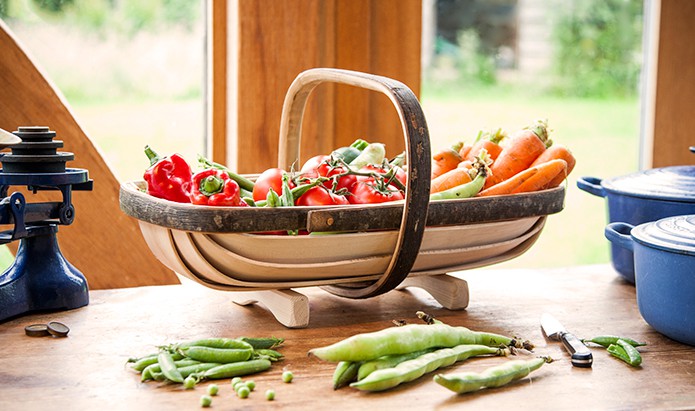
A trug, like the word, is simplicity itself. Dating back to Anglo-Saxon times, when a ‘trog’, meaning a boat-shaped vessel, was used to measure and carry all manner of things, the modern day version still serves those basic yet vital purposes. Traditionally the trog was hollowed out of a solid piece of wood, until the trug-making craft evolved into the lightweight but still strong version we are all familiar with today; overlapping willow boards within a chestnut frame.
Historically Sussex has always been a trug making area, hence the iconically named ‘Sussex Trug’, and Cuckmere Trug Company is proud to be able to be connected to the original Sussex Trug maker – Thomas Smith – way back in the early nineteenth century when he opened the world’s first trug store. The popularity of the simple yet striking trugs has not diminished. Originally an agricultural artefact, trugs are most often used in gardening, and are sold all over the world, and were even featured as a Gold-medal winning garden within the Chelsea Flower Show, 2015.
Here, Robin Tuppen, owner of the Cuckmere Trug Company, explains the longevity of our love affair with trugs and what makes a genuine Sussex trug the trug of choice…
Firstly, for readers who aren’t familiar with Cuckmere Trug Company, please can you explain what you do and the products you make?
Cuckmere Trug Company makes and sells a range of over 70 different trugs, which are lightweight baskets of overlapping willow boards secured to a chestnut frame, all handcrafted in our workshop in Herstmonceux, Sussex. Our retail shop, Thomas Smith’s Trug Shop, named after the inventor of the modern trug in the early nineteenth century, was the first trug shop in the world and has been retailing since 1829.
All of our trugs are dated and signed by our craftsman who make them and stamped as genuine Thomas Smith trugs. The Cuckmere Trug Company is the trade side of the business and we sell to retailers and wholesalers across the world. We are often seen at gardening shows across the UK and mainland Europe, where we provide demonstrations on the traditional craft of trug making. We also hold courses at the Weald & Downland Open Air Museum, Buckingham Summer School and in our own workshop.
Your trugs come in a variety of sizes, numbered 1 to 8, but I understand in the past they ranged in size from ‘pint’ to ‘bushel’, old agricultural measurements, which suggests that trugs might have had an agricultural application in previous years… Can you talk about the history of trugs and their early usage?
The origins of the trug goes back to Anglo Saxon times, when it was a wooden vessel carved out of solid wood in a round form, which archaeologists believe probably had handles carved underneath. The word ‘trug’ derives from the Anglo Saxon word ‘trog’, which means boat-shaped – and it’s very likely that the original trugs were coracle-shaped, a round boat used to navigate waterways.
Trugs would have continued in this form until the mid-1600s, and we know this as historians uncovered an inventory on a farm in Newhaven which recorded “a dozen of trogs in the milking parlour”. Back then, these trugs were essential to agriculture in the area, where they were used to measure liquid and grain, hence the agricultural measurement scale which was applied to them – ‘bushel’, ‘half bushel’ and the like. This size scale was adopted when Thomas Smith created his new lightweight trug design, made from willow and chestnut frames, rather than hollowed out solid wood, but which were renamed Number 1, Number 2 and so on, with each number reflecting how many pints it holds i.e. a Number 1 holds one pint, going up to a Number 8 which measured four gallons, or half a bushel.
Thomas Smith’s trugs would certainly have been used in farming, and back then he would have gone up to a size 12 which would have been so large it would have to have had handles at either end, rather than in the middle. One of our old workers here, Reg Saunders, who used to farm on Pevensey Marshes during the second world war before losing a leg in a shooting accident, remembers hanging a bushel trug around his neck with a piece of string digging into his neck, which he used for scattering grain across the fields. These days we only go up to a Number 8 in size, a limitation of the cricket bat willow we can obtain and modern preferences.
After the war, when mechanisation came in, the reliance on the trug diminished, but it must have been important until this time, as trug making was a reserved occupation in both world wars and trug craftsmen weren’t forced to enlist in the army. Obviously, everything has changed now, and trugs are no longer vital to agricultural production, but they are still used on smallholdings and by hobby gardeners for gathering eggs and collecting fruit and vegetables from orchards and vegetable patches. Trugs were also popular amongst horse owners, and in fact still are, for taking grain to the horses.
These days, trugs are very popular with gardeners, and a garden design dedicated to the craft of trug making even won a gold medal at the Chelsea Flower Show in 2015. What is it about trugs that have made them such a hit with gardeners?
Their popularity with gardeners dates back to when the Royal Sussex Trug, which is the name we give to our traditional range of trugs invented by Thomas Smith, was awarded the Gold Medal at the Great Exhibition in 1851, as well as winning further gold, silver and bronze awards over the years in Great Britain and on the Continent.
I think the main reason they’re popular with gardeners is because they’re very lightweight whilst at the same time being very strong, they’re versatile and suitable for a whole range of uses, and aesthetically, they’re very appealing in a traditional garden setting. Their light weight means they can be easily carried to all parts of the garden to take away cuttings, whereas it would be difficult to pull a heavy cart through wet and heavy ground in the autumn and winter months. Their versatility makes them suitable for pruning bushes and trees, as you can hang the handle over a forearm, allowing two hands to remain free for handling secateurs and branches or holding a step ladder. Trugs are used for many things in the garden, from carrying tools, weeds and cuttings, as well as harvesting fruit, vegetables and cut flowers. We even have a trug designed around a walking stick for elderly and disabled gardeners!
Of course, trugs aren’t just for gardeners; they’re often bought for use inside the home, where they can be uses as bowls – we do versions without handles – and used for storing fruit, nuts and sweets, for passing bread around the dining table, as well as for storing logs.
They’re also ideal as corporate gifts; the nearby Plumpton College presented the Duchess of Cornwall with a bottle of their homemade wine from their own vineyard in one of our ‘Cucumber’ trugs recently and Gordon’s Gin ordered fifty of our trugs painted in their distinctive green bottle colours for press work.
What different types of wood are used in the making of a traditional trug and why are certain woods preferred over others?
For the handle and rim of the trug, we use Sweet Chestnut, which is coppiced locally; although in the past Ash was also used. Herstmonceux is at the top of Pevensey Marshes and the conditions there were suited to growing willow and, behind the marshes, the woodlands have lots of chestnut and ash, so trugmakers used what was locally available. Coppicing is an ancient form of woodland management still practiced today, and is a very sustainable way of providing regular supplies of chestnut, as well as being beneficial for the flora and fauna within the woods.
With a rotation coppice, a different section of woodland is harvested each year, and as there are several stages of chestnut re-growth spread out across the coppice woodland, it results in a constantly changing flora and fauna moving around which is really interesting.
We use the butts of Sweet Chestnut, either up to the first eight feet of the tree, or the first big knot, whichever is soonest. We don’t use wood above this as it becomes too brittle when bent. This wood is typically 8-12 years old when harvested which produces rounds of chestnut up to 8” diameter. We don’t like to go much beyond this as it becomes unworkable if too thick; the ideal diameter for us is 6-8 inches.
Sweet chestnut is ideally suited for making the handles and rims of trugs as it straight growing and easy to split into true, straight poles using a cleaving (splitting) axe or froe, which can then be hand shaved and steamed and bent into shape.
Chestnut does steam very well, which means it can be bent around a ‘former’ – a wooden template – into the desired shape, such as the handle or rim, without it cracking or splitting.
Also, with it being a hardwood, it is also resistant to rot. Sweet chestnut isn’t the only wood suited to such use, and as well as Ash, Sycamore could be used as well, but Sweet Chestnut was what was predominantly used in the past given its abundance locally.
For the boards of the trug, which form the base and sides, we use Willow, a lightweight wood, which perfectly complements the strong chestnut frame. Like the Sweet Chestnut, Willow was abundant locally and was grown in the wet, rich growing ground of the nearby marshes.
Willow is still grown there today, but it isn’t the right type of Willow any more, so we have to source our willow from a specialist willow supplier. The willow we use is English Cricket Bat Willow – Salix Alba Caerulea – which we buy as off-cuts from a supplier of cricket bat clefts for the cricket bat industry, which are effectively blank cricket bats that haven’t been formed. We use the tops of trees, and rejected clefts that can’t be used for bats, but still are ideal for our purposes.
If I’m being honest, Willow isn’t the ideal wood to use for trugs, as its grain runs in two different directions, which makes it difficult getting the boards flat when sanding or using a draw knife. We could use other woods, such as Poplar, which is in the same family as Willow, as well as Oak for the boards, but the traditional view is that trugs are made from Chestnut and Willow.
How does seasonality and availability of materials affect your work and the products you make?
Seasonality is not really a problem, unless Spring is wet and the gardening season starts later in the year, which can affect demand to a certain extent. Spikes in demand can be a bit trickier however, such as the huge demand for trugs after last year’s Chelsea Flower Show, when we were selling 40 trugs per day for most of May and June. Luckily we had stock ready, so we didn’t have a problem fulfilling orders, but we had to work hard to replenish that stock.
Generally, we have less trade customers than we used to, as some are buying cheap Chinese imports, and we find it easier to predict and plan our production schedule these days. Ordinarily, July & August and January & February are quiet trade periods for us, so we usually spend this time building up stock again in readiness for the busy periods.
Supply is a bit more of an issue though. We’re fine with Willow at the moment, as the off-cuts we buy from the cricket bat willow supplier are available all year round, but Sweet Chestnut can be difficult to source sometimes as a lot of landowners won’t allow cutting of chestnut coppice during the late spring and summer months, whereas we require it all year round. It’s difficult, but manageable. Going forward, it would be more manageable if we could coppice from our own woodland.
Your traditional trugs are called ‘Royal Sussex Trugs’. What is the association between the craft of trug making and Sussex, and what is the ‘Royal’ connection?
The origins of ‘modern’ trug making are here in Herstmonceux, Sussex, where it began when a young man called Thomas Smith redesigned the old, heavy wooden trog, and created a modern, lightweight version, suitable for both farmers and gardeners back in the 1820s. We know Thomas Smith started his workshop at Hormes House, Windmill Hill in Herstmonceux, which he did by converting the ground floor of his house to a workshop. From these beginnings, many other trug-makers followed suit, and a whole industry flourished in Sussex around the making of trugs, which even gravitated outwards to Kent and even Somerset. Even as late as the 1960s, there were over 25 different trug-making companies in Herstmonceux alone!
The royal connection dates back to 1851 when Thomas Smith attended the The Great Exhibition at Crystal Palace and he was lucky enough to have his stand visited by Queen Victoria, who ordered some trugs as gifts for members of the Royal Family. Thomas was also awarded the Gold Medal and Certificate of Merit at The Great Exhibition. This was the start of a relationship between the Royal Household and Thomas Smith, which eventually saw him being awarded the Royal Warrant, hence the name ‘Royal Sussex Trugs’. The original Hormes House where Thomas Smith established his workshop still bears the Royal Crest.
As we are successors to Thomas Smith’s original trug company, we are the only company entitled to call our trugs ‘Royal Sussex Trugs’ and we proudly display Thomas Smith’s original Certificate of Merit in our trug shop today.
You also make a South Downs Trug; what is the different between that and a traditional Sussex Trug?
The South Downs Range of trugs were originally developed in the1960’s as a contemporary version of the traditional trug. They were originally designed by a Sussex company, Hide of Hailsham, that also manufactured cedar greenhouses and summerhouses, and they sold the traditional trug as a sideline, but because demand outstripped supply for the traditional trug, and they couldn’t get hold of enough trugs made from traditional materials, they came up with the idea of making trugs from plywood. These were still handcrafted using the same techniques as traditional trugs, but instead of willow steamed and bent around formers to create the shape, birch plywood was softened in boiled water and bent around formers instead. Once dried, the trugs could be sanded and stained or painted with vibrant colours. Whilst some traditionalists would argue they are not Sussex trugs, they are still made using the skills of Sussex trug craftsmen, but using modern, sustainable materials for a contemporary audience.
It is actually through these contemporary trugs, that I became involved in the traditional craft of trug making. My brother and his wife and I created the company South Down Trugs & Crafts to create the South Downs Range of contemporary trugs, and I joined the firm to help grow the company, having had a prior career in both decorating and motor aftermarket sectors. It was the South Down Trugs & Crafts company, later renamed Cuckmere Trug Company, which bought Thomas Smith & Sons Trugs 27 years ago, which had been through various stages of ownership since the last of the Smith family retired in the 1960s, without which the company would have gone under. I’m very comfortable that the contemporary range isn’t cheapening the craft of trug making, and it utilises the full range of trug making skills as our traditional trugs require, and in fact just like Thomas Smith, the contemporary range of trugs became popular amongst royalty, whereby the Royal Estate at Windsor Castle were early customers of our South Downs Range, and we supplied the Royal Estate for over 20 years.
How long is a traditional chestnut and willow Sussex Trug expected to last?
That’s a very difficult question to answer, as it depends on how it is looked after. If it’s left outside in all weathers and treated badly, then a lot less than if you take care of it. As a minimum you should get a good ten years from our Royal Sussex Trug, but if you look after it, then twenty years. If you were to really look after it, then I see no reason why it couldn’t be still in use after fifty or sixty years! I have an old Victorian trug used as a sewing basket, and another of about a hundred years old made by one of the original Smith family members!
The longevity of a trug is really down to the quality of materials used, the craftsmanship of how it was put together and how well it has been looked after. It’s okay to leave it outside overnight occasionally, but you need to dry it out naturally in the garage, shed or summerhouse afterwards. Prolonged exposure to the elements, and/or keeping damp things inside it, will certainly cause it to rot. People often ask if they should use beeswax or oil to protect it, but my answer is always that you can do that if you wish, but it’s not necessary provided you look after it. We provide a five year exchange and repair guarantee, and if you’re not happy with it during that time, we’ll swap it for a new one.
Are your customers predominantly local, or do you sell further afield?
Our Sussex Trugs are popular throughout the world, and we sell as far afield as Alaska, New Zealand, Japan and South Africa!
We do have a shop adjacent to our workshop, which attracts lots of local customers, but we also get lots of visitors from hundreds of miles away who will have seen us on the internet or carrying out demonstrations at various gardening shows across the UK, as well as in France and Germany, and they want to visit the workshop to get a better idea of what we do.
We extend a warm welcome to all customers who come here, even if they just want to have a look around and don’t end up buying anything. Our visitor book is full of names and addresses of people who live across the UK, as well as mainland Europe, the USA and Canada, Japan and Africa. In fact, we get lots of Canadians visiting, as Queen’s University in Ontario has an international study centre at nearby Herstmonceux Castle, so we get lots of students and their families come here to look around.
We have customers in Australia and New Zealand, but due to an embargo they have on importing barked products unless they are fumigated – which is costly at $280 per trug! – we recommend our stripped bark range of trugs for those two countries.
I’ve heard that some UK retailers are selling Sussex Trug-style ‘traditional trugs’ that are actually made in China. What are your thoughts on that?
Yes, it’s very disappointing. There’s one large British gardening and horticultural retailer that is wholesaling and retailing ‘traditional wooden trugs’ in a Sussex-style design that are made in China which does have huge ramifications for our craft, and I don’t think they have any understanding as to what they’re doing to the trug industry in this country.
Given the cheaper cost of Chinese labour, the price point is so much more attractive for professional buyers to buy them from this company, and as a result many retailers have switched to selling these factory-made imports instead of traditionally crafted products made in Sussex, and we have lost quite a bit of custom as a result. However, in terms of quality, they’re no real competition for us, as they’re very flimsy and you’ll probably only get a year or 18 months use out of them. It’s very difficult to work out what wood has been used in their manufacture as well.
Our trugs are far more robust – the crafting of the rims, handles and putting together is all done by hand by real craftsmen, and they’re made in a different way, using different materials, although design-wise, when new, they look fairly similar, which is really confusing for consumers. The problem is exacerbated when garden centres and online retailers call them ‘traditional trugs’, or worse still ‘Sussex Trugs’, as it’s bringing down peoples’ expectations of the real thing.
From a consumer’s point of view, it’s also a false economy and the economics of investing in a traditional Sussex Trug is far more satisfactory. Assuming a cheap import costs £20 and lasts 1 year, that’s £10 for every six months of its lifetime. If one of ours costing, say, £50 lasts a minimum 10 years, that’s £2.50 for every six months of its lifetime, but assuming it lasts fifty years, that equates to only £0.50 pence for each year of its lifetime, so far more attractive, and consumers are helping to keep a traditional craft going as well!
Do you think it would help if authentic Sussex Trugs were afforded some kind of protected designation of origin status?
I think some form of protected legislation would be helpful, and in fact the EU is considering bringing in legislation to provide protection to hard goods, in the same way as food and drink which exists currently.
However, one possible barrier to a successful outcome is arriving at a consensus for the specification of what constitutes a Sussex Trug. The EU is currently looking at a Sussex Trug specification, but there is a difference of opinion within the craft as to how it is worded. The Association of Sussex Trug Basket Makers, which we’re not members of, want a tight framework as to what materials can be used, which precludes anything that doesn’t comply with specified woods, limited to chestnut handle and rim, and willow for boards.
My concern is what happens if there is a canker in Chestnut, similar to the recent devastation caused by Ash dieback, what happens then? If we can’t get supplies of chestnut, then we’ll have to use another type of wood, maybe sycamore, but it won’t be lawful for us to call them Sussex Trugs, which would be nonsense… The same applies to willow – at the moment our source of willow comes from a company in Essex which supplies the willow for 80% of all cricket bat clefts, but what happens if foreign companies can produce willow far more cheaply and they stop producing in the UK, what will we do then? We will need to look at alternative sources of wood, perhaps Poplar, but again, it won’t comply with EU law.
In my opinion, they’re called Sussex Trugs because they’re made in Sussex, and not because of the specific type of wood used. In fact, if you look at old British Pathé newsreels, there’s a film from 1923 that states that Sussex Trugs used to be made from ash in the past, and one of our elderly ex-employees, Reg Saunders, remembered (he’s passed on now to the Great Trug Shop in the Sky) making them out of Ash. I think it’s the craft of trug-making in Sussex that needs protecting, and we shouldn’t be hung up over the materials, as it could act against us in the future.
I am also of the opinion that our South Down Contemporary Trugs (of which there are two other makers in Sussex) should be included on the list of Sussex Trugs as it was invented in Sussex (just like the Traditional Sussex Trug), it’s made in Sussex by Sussex craftsmen, so why not?
I have given my thoughts on what should be included in the legal framework to my local MEP and to Brussels, so hopefully we can get some form of compromise. Ultimately, I’m interested in securing the future of trugmaking for future generations, and as we get diseases now which weren’t an issue in the past, I think we need to have a looser definition of what materials are used which will benefit all Sussex trugmakers at the end of the day…
You offer brief introductory courses on how to make a Sussex Trug at your workshop, as well as at the Weald & Downland Open Air Museum and Buckingham Summer School, but how long does it take to become Master Trugmaker?
The introductory courses we run are really ‘trug making appreciation courses’ giving attendees a great opportunity to go through the various steps of making a trug, from cleaving and shaping chestnut, to steaming and bending the boards, and assembly. They’re great fun and participants learn a lot about trugs, but they’re only designed to make a single type at a leisurely pace. A master trug maker has to be able to make 35 different types, with and without bark, so 70 in total, and at speed, which requires a lot of skill and practice.
To go from Apprentice to Craftsman takes 3 years. The Apprentice will become proficient in trug making by the end of their second year, and will take on a further green wood-working skill, such as making swill baskets, in their third year, to broaden their skill-base.
For a Craftsman to become a Master Craftsman, they need to take two Apprentices through to Craftsmen over three years consecutively, taking a minimum of six years. So the earliest someone without any trug-making experience could become a Master Trug Maker is nine years. If you take a look at the history of craftsmen, that’s how it was done.
I understand the traditional craft of trug making, according to the Heritage Crafts Association and the Radcliffe Trust, is nearly extinct and has been placed on the Radcliffe Red List of endangered crafts. How many people do you estimate are making trugs professionally today in the traditional way and what do you believe should be done to halt the demise of the craft and ensure it continues for future generations?
It’s difficult to say how many people make Sussex Trugs professionally in a traditional way, as there’s no real information on this. It’d imagine it’s probably less than a dozen across the county though.
The Radcliffe Trust, in conjunction with the Heritage Crafts Association, have put together a ‘Red List of Endangered Crafts’, and trug-making is listed as nearly extinct, which is a drastic state of affairs.
From my perspective, I think the best course of action to protect the craft would be to set up a ‘Sussex Trugs and Woodland Craft Heritage Centre’ in Herstmonceux, the birthplace of Sussex Trugmaking, to protect trug making for future generations, as I can’t see any other way of halting the demise of the craft. I envisage forming a Limited Company to create a Trust Fund to obtain grant money to establish the centre which would be run by three voluntary directors of the trust. The Heritage Centre would have craftsmen in residence who would take on apprentices, train them, and the centre would be self-sufficient by selling the products. The craftsmen could also spend some of their time experimenting with new materials and trying new ideas and techniques out.
Apart from that, I’m not confident. Sadly, there were promises made by politicians to come up with craft-based apprenticeship schemes, but this hasn’t filtered down to us, which is frustrating. You can get funding to take on an apprentice to work in our office, but not to learn the craft itself, which doesn’t really make sense. The heritage craft sector is said to be worth £4.5 billion to the economy annually, and I believe it’s really important that Government encourages craft-based apprenticeship schemes.
How do you see the future for the Cuckmere Trug Company?
I foresee our future being tied up with the planned Heritage Centre, with our company being rolled into it. I’m 68 years old now and I don’t have a successor to pass the company onto, but I’m passionate about maintaining its future. I want to see the shop and the workshop being run by the trust company.
We’ve weathered the worst of the problems caused by the recession and flood of cheap Chinese imports, and have made the commitment to bring on two new apprentices this year. We’ve invested in a new mobile-friendly website, which is coming out in the Spring, which will include a new range of imagery. Our staff are committed to what we’re doing here, and before I retire, I want to see the craft in a healthy position so future generations can benefit from it.
Given the small size of our craft, and the lack of training opportunities amongst our competitors, as they’re either stand-alone individuals or just operate on a part-time basis, without the Heritage Centre, I don’t know how else we can keep the craft going. Trug-making has been my passion for the past three decades and I want it to succeed. I feel now that there has been a tide-turn and people want things that are traditionally made once again. I hope it continues, not only for Trug Making, but for all traditional crafts.
Thanks to Robin Tuppen for taking time out of his busy schedule to answer our questions.


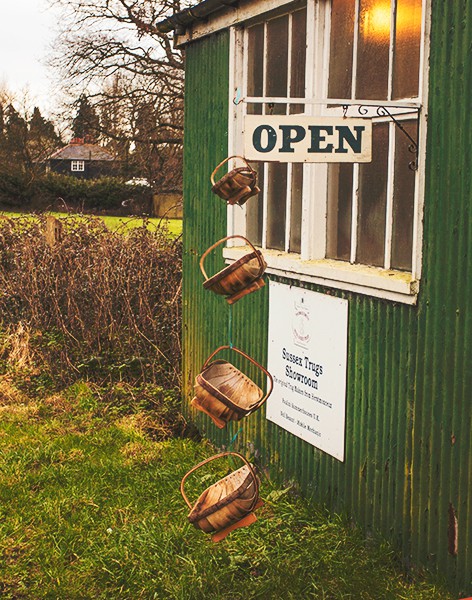
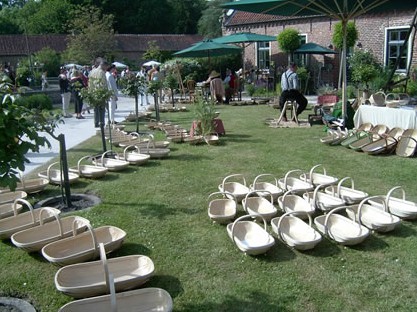
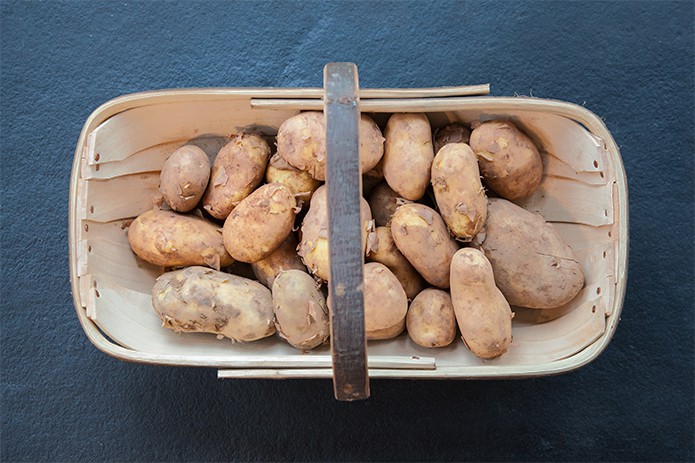
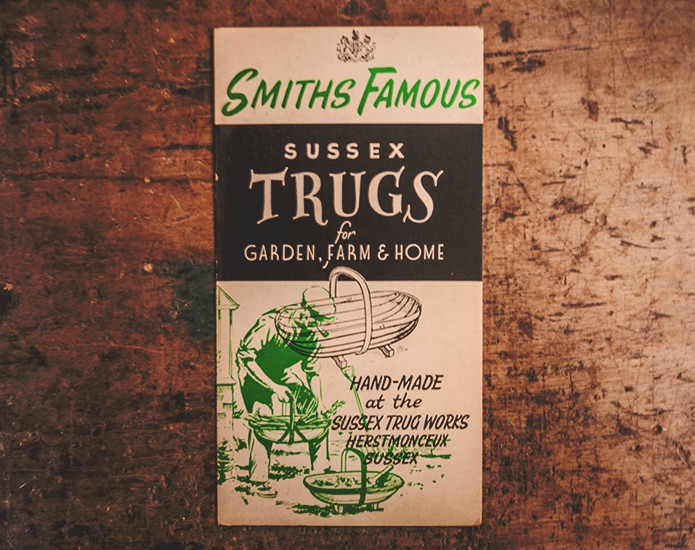
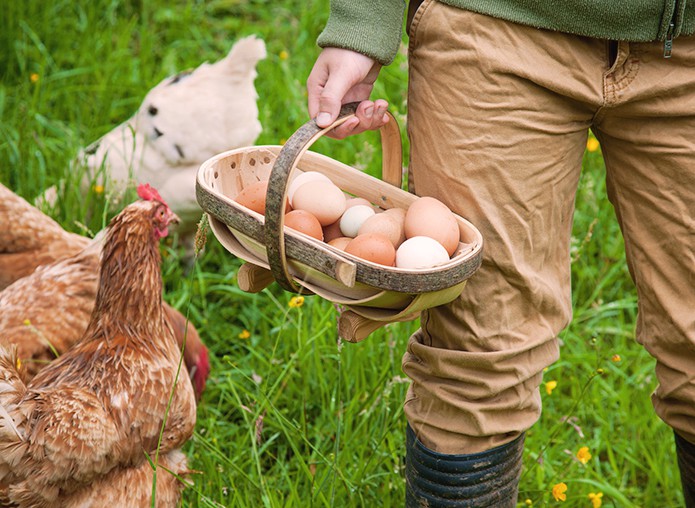
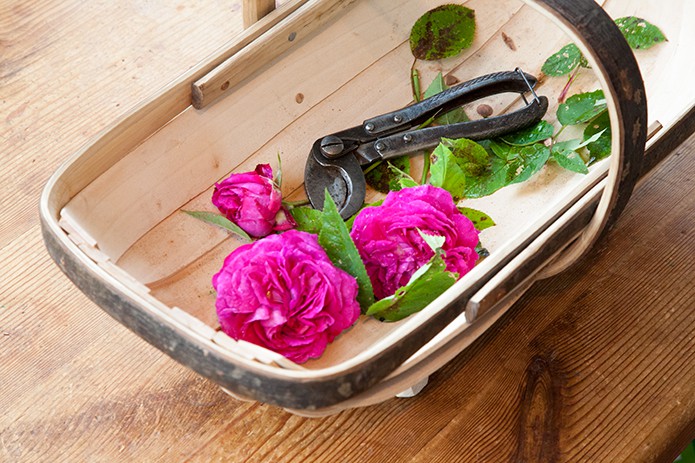
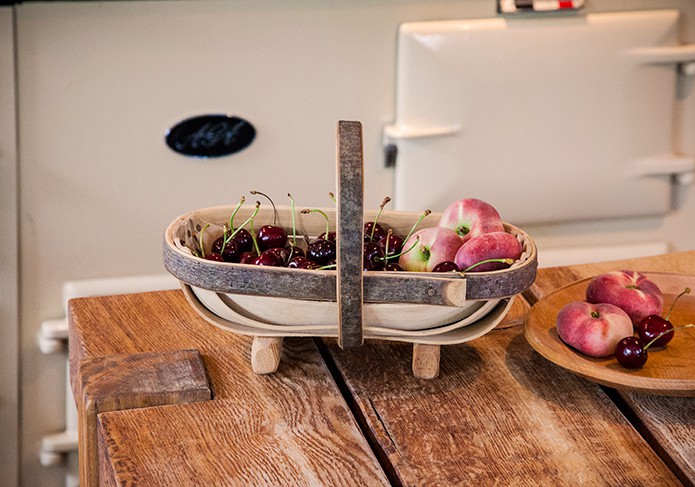
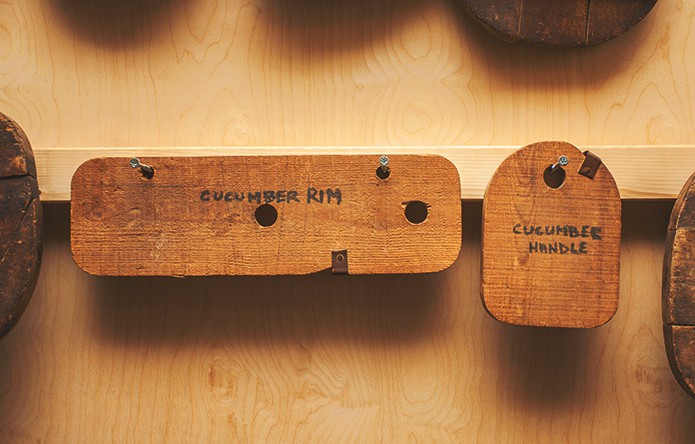
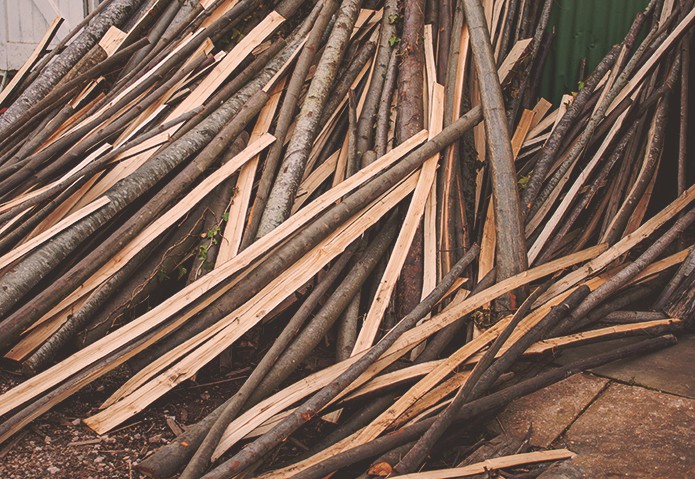
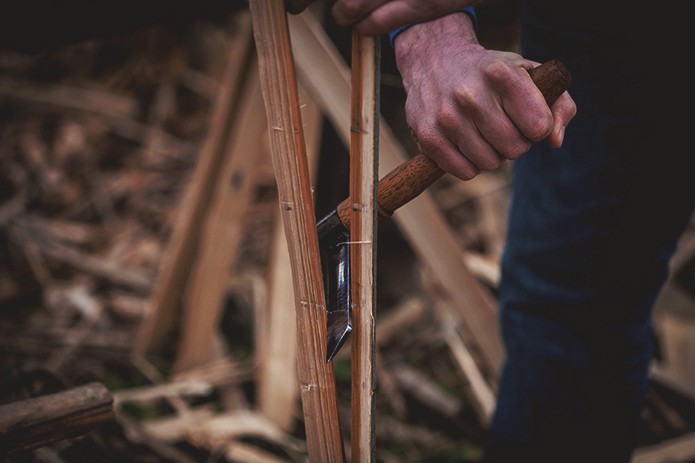
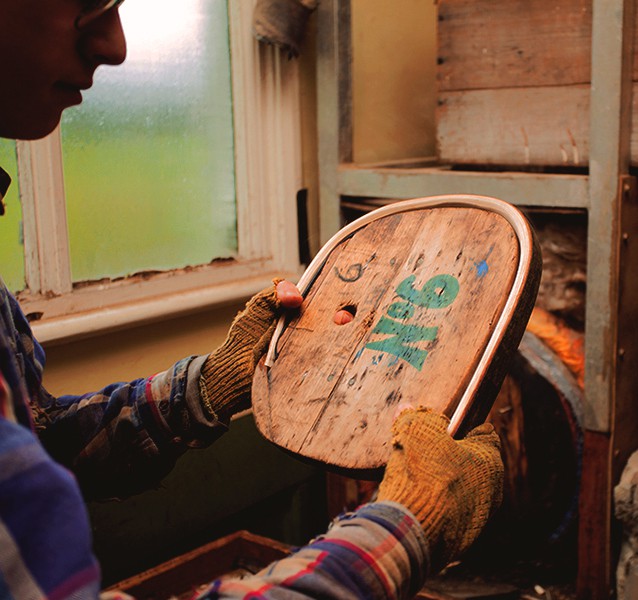
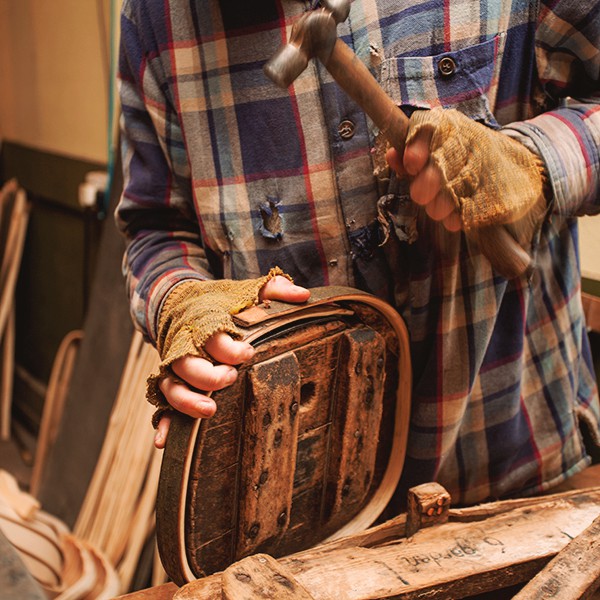
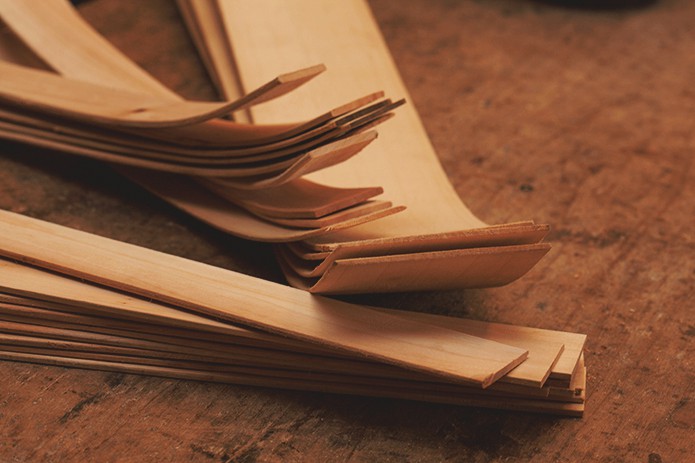
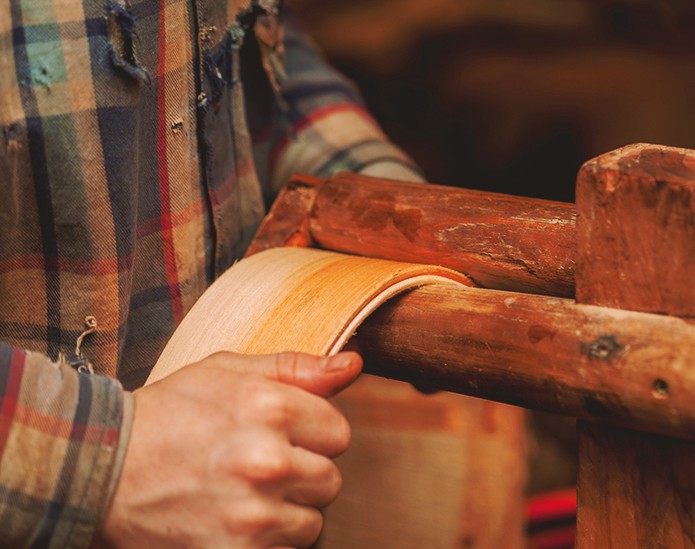
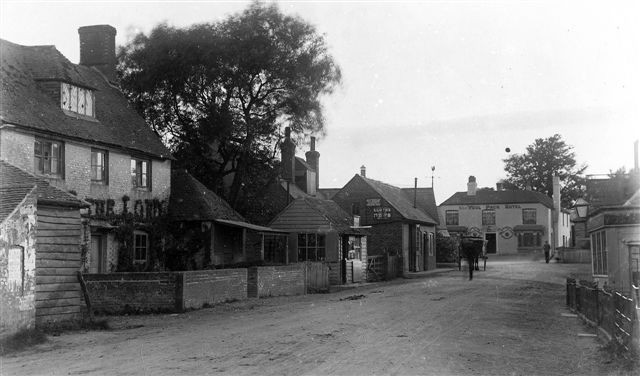
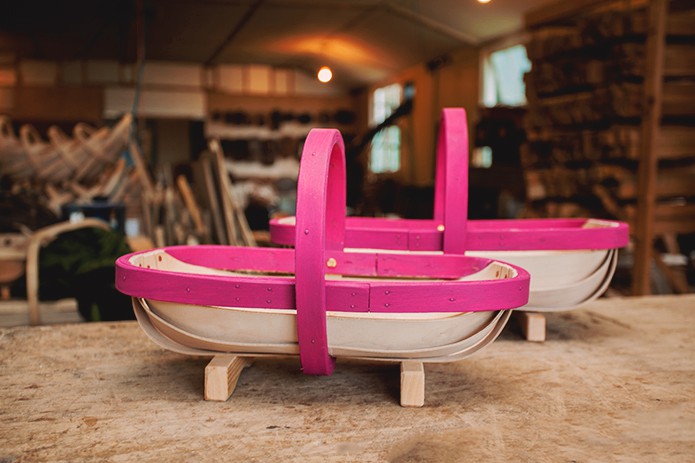
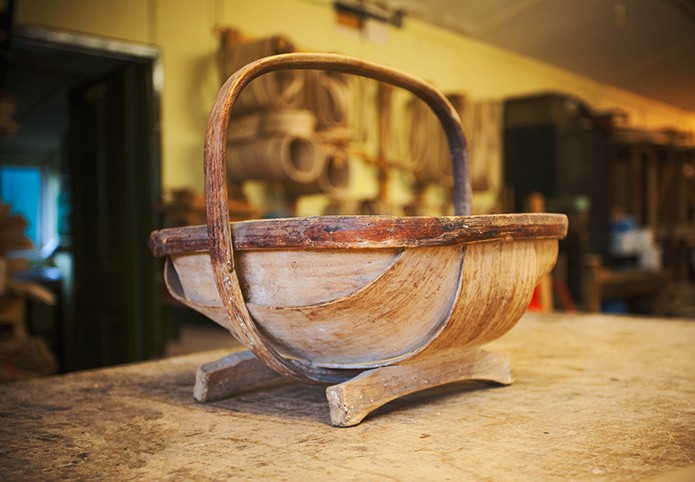
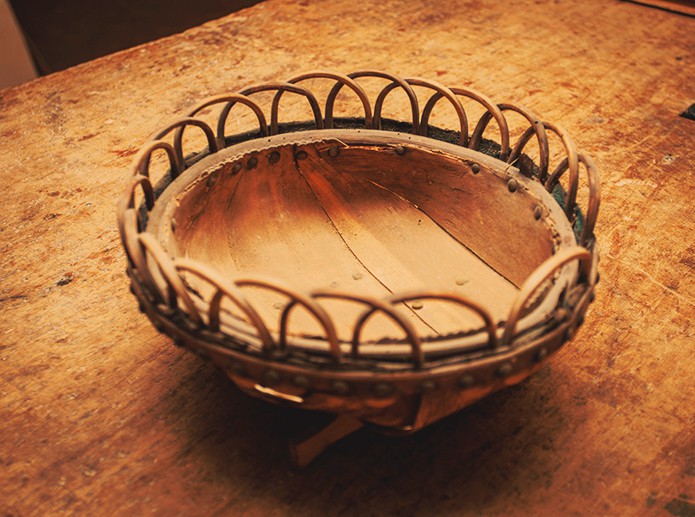
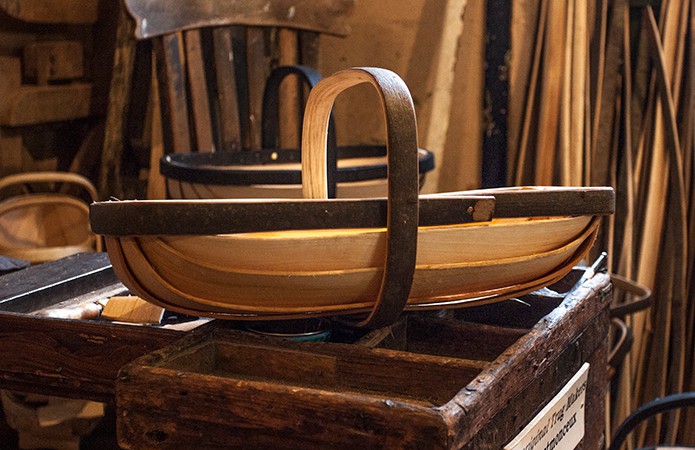
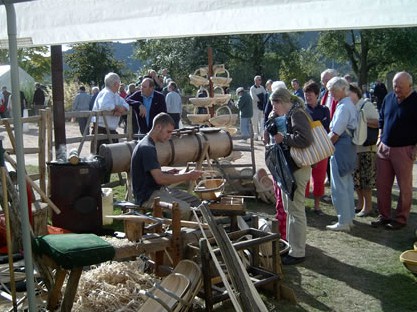
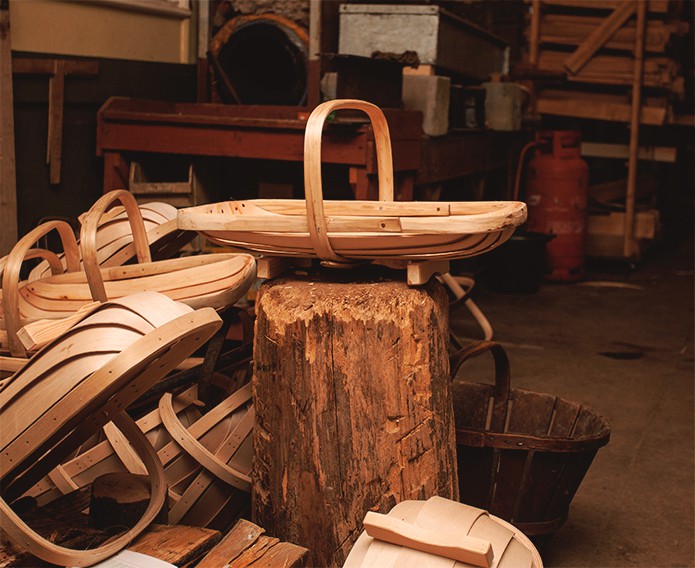
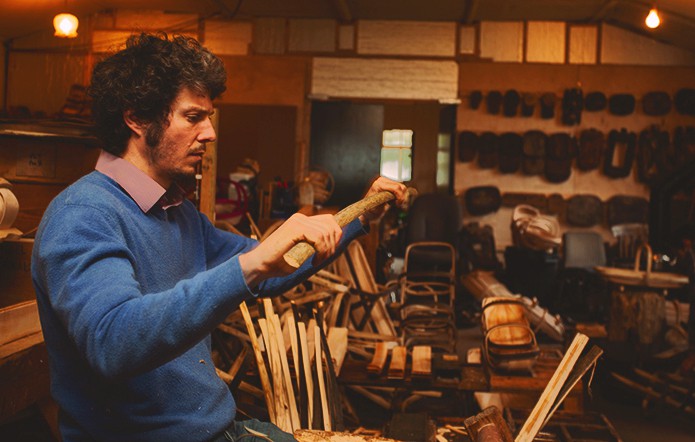
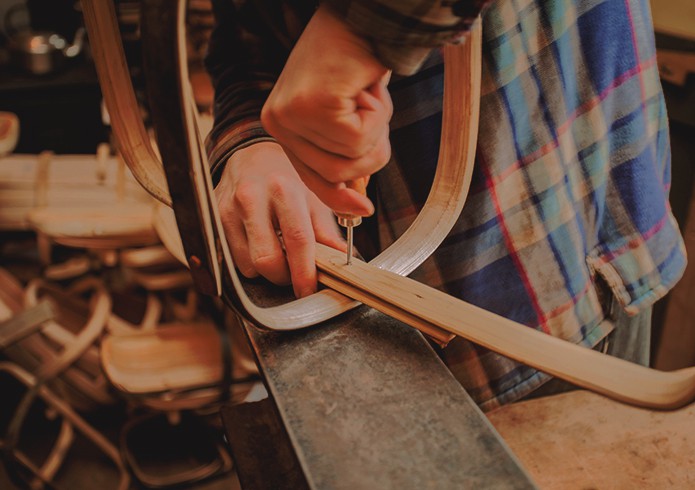
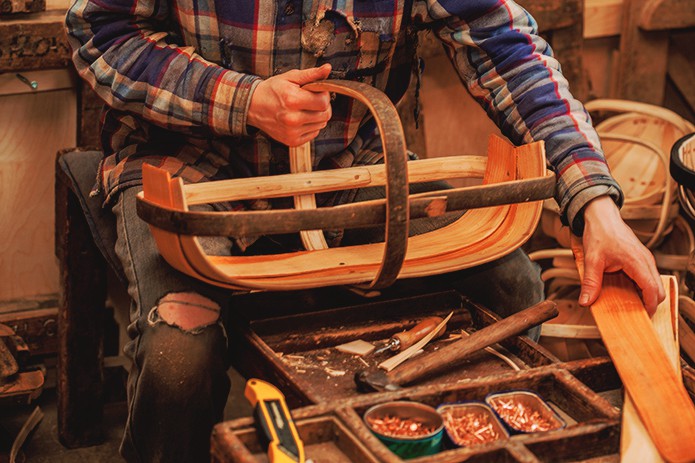
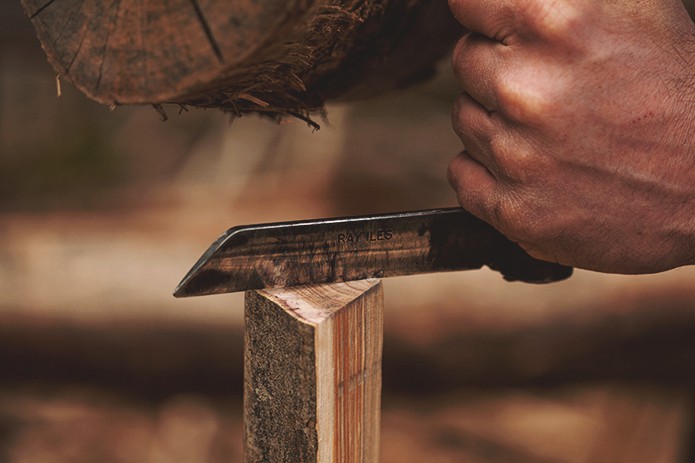
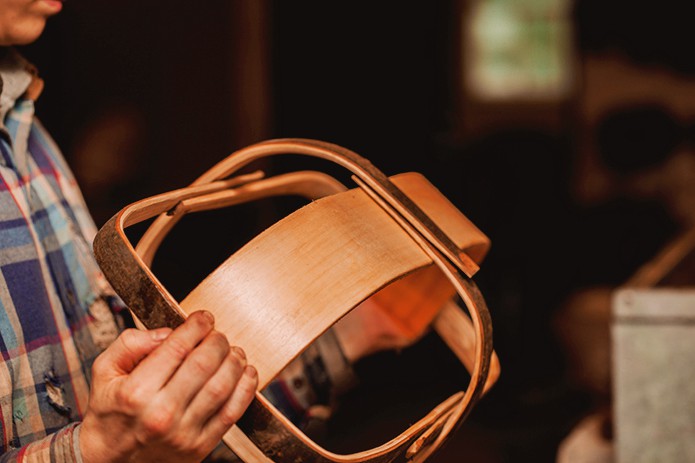
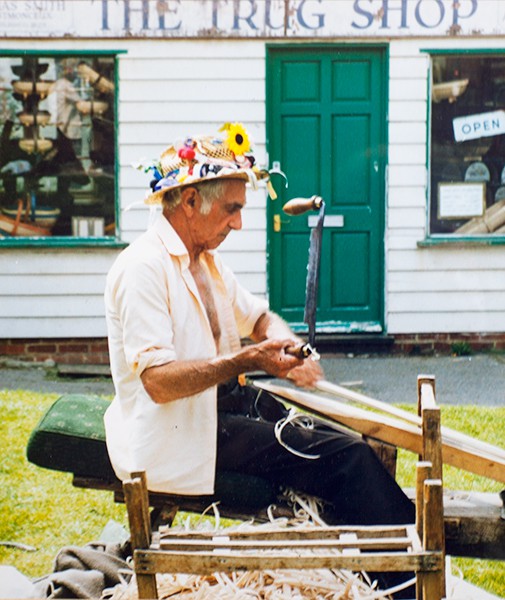
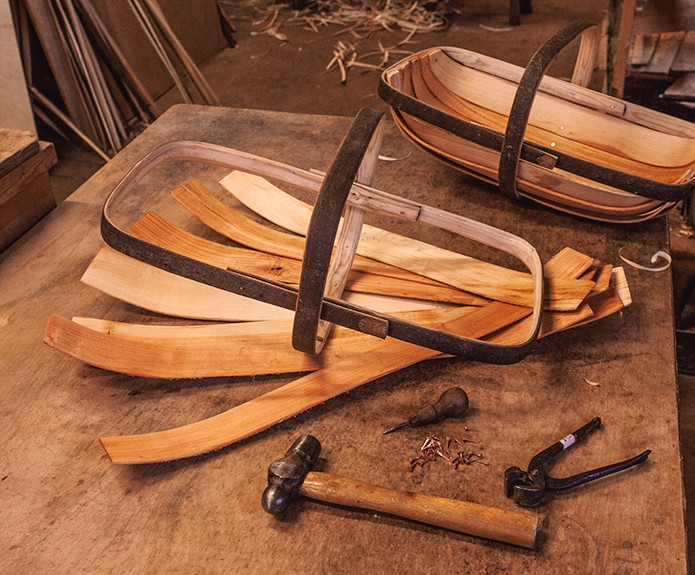
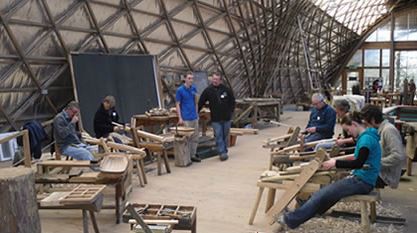
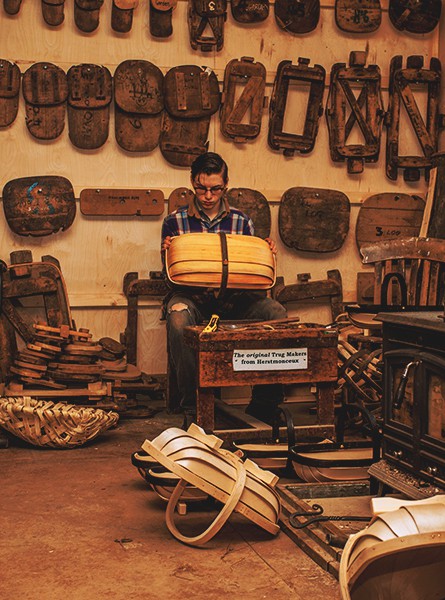
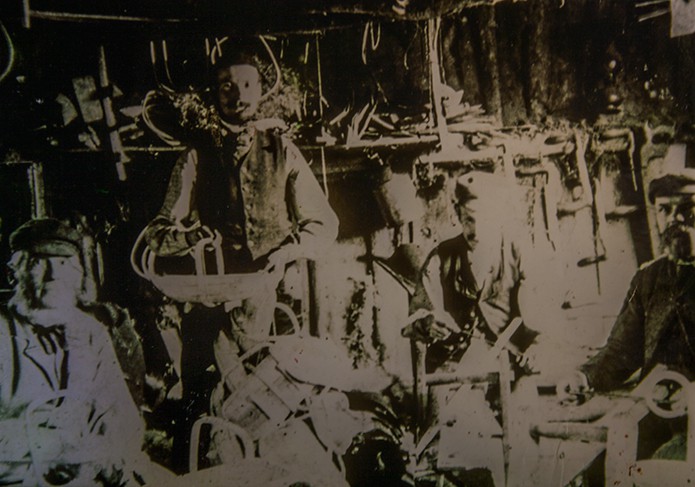
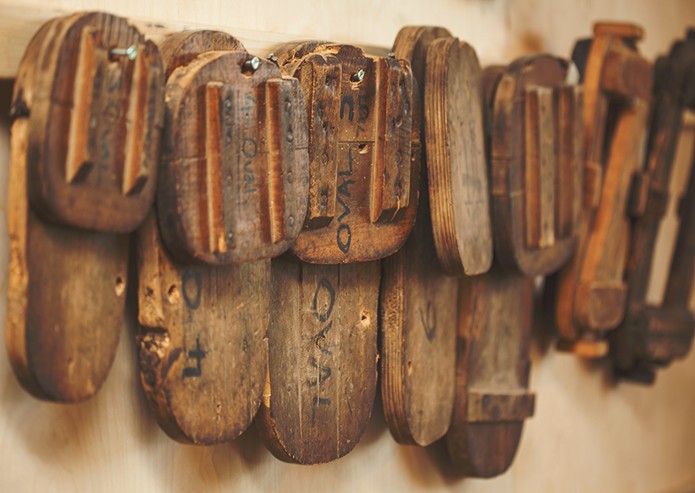
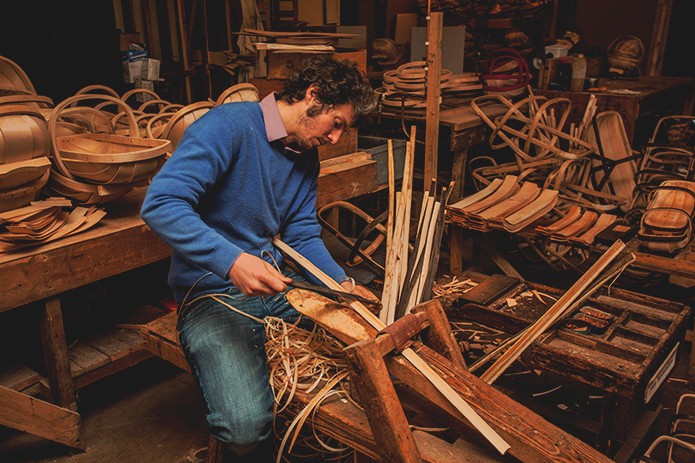
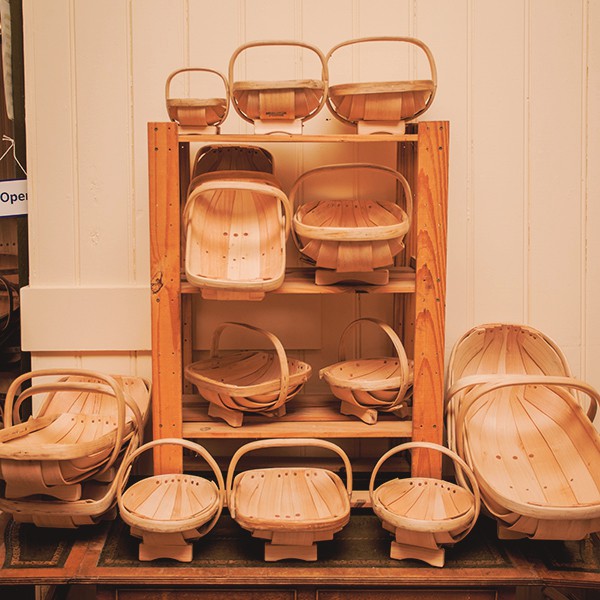
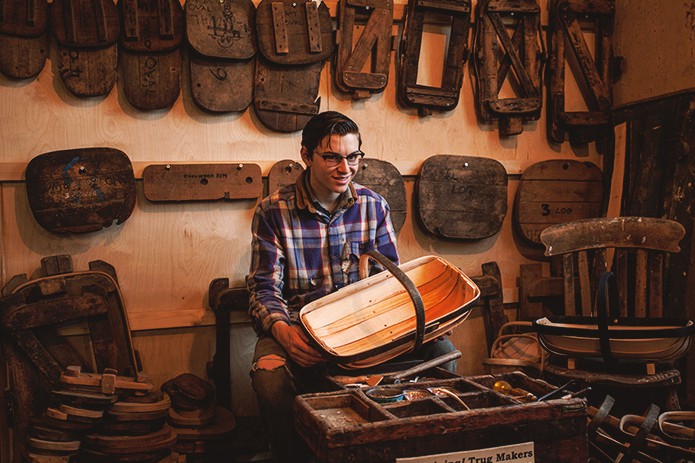









Friday, July 15th 2016 at 10:43 am
[…] one of the few remaining Master Craftsmen, Robin Tuppen, owner of the Cuckmere Trug Company, talks us through the many steps involved in handcrafting a trug, and explains his commitment to […]